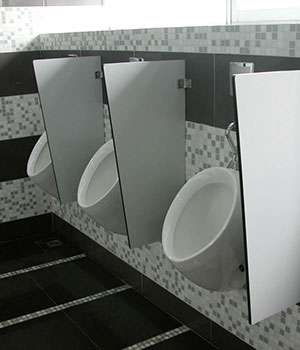
As one of the largest cities in India, Delhi is a vibrant hub of culture, commerce, and activity. However, with its immense population comes the pressing need for effective public sanitation solutions. Toilet cubicles are essential in maintaining hygiene and providing privacy for individuals in public spaces. In this blog, we will delve into the significance of toilet cubicles in Delhi, their design considerations, benefits, and the role they play in enhancing public health and comfort.
The Significance of Toilet Cubicles in Delhi
In a metropolitan area with millions of residents and countless visitors, clean and accessible restroom facilities are vital. Here’s why toilet cubicles are particularly important in Delhi:
- Health and Hygiene: Accessible toilet facilities are crucial for preventing the spread of diseases. Poor sanitation can lead to health issues, particularly in densely populated areas. Toilet cubicles help ensure that residents and visitors can maintain proper hygiene.
- User Comfort and Privacy: Cubicles provide a sense of privacy that encourages people to use public restrooms without hesitation. This is particularly important in public places like malls, parks, and transit stations, where privacy can often be overlooked.
- Urban Development: As Delhi continues to grow, the need for well-planned public facilities becomes more pronounced. Toilet cubicles contribute to the overall infrastructure of urban spaces, improving the quality of life for residents and tourists alike.
Benefits of Installing Toilet Cubicles
Investing in toilet cubicles offers numerous advantages:
- Space Efficiency: Cubicles can be designed to maximize space in crowded areas, making them suitable for various environments—from bustling marketplaces to serene parks.
- Durability: Made from materials such as HPL (High-Pressure Laminate), stainless steel, or phenolic boards, modern toilet cubicles are built to withstand heavy usage and are resistant to damage, making them ideal for high-traffic locations.
- Low Maintenance Costs: Durable construction reduces the need for frequent repairs and maintenance, leading to cost savings for municipalities and businesses.
- Aesthetic Appeal: Toilet cubicles can be customized to match the aesthetics of their surroundings, enhancing the overall look of public spaces while promoting cleanliness.
Key Design Considerations
When designing toilet cubicles for Delhi, several factors should be taken into account:
- Accessibility: Ensure that cubicles are accessible to everyone, including individuals with disabilities. This can include wider entrances, grab bars, and appropriately placed fixtures.
- Ventilation: Good ventilation is essential for preventing unpleasant odors and maintaining a fresh environment. Incorporating exhaust fans or designing cubicles with adequate airflow can significantly improve user experience.
- Water Efficiency: With increasing concerns about water scarcity, incorporating water-saving fixtures such as low-flow toilets and sensor-operated faucets can help reduce water consumption in public restrooms.
- Safety and Security: Opt for materials that are resistant to vandalism and ensure that locking mechanisms are secure. This helps create a safe environment for users.
The Role of Sustainability
Sustainability is becoming an essential aspect of urban planning, including public restroom facilities. Here are some sustainable practices for toilet cubicle installations:
- Eco-Friendly Materials: Choosing environmentally friendly materials for cubicle construction can significantly reduce the carbon footprint associated with public restrooms.
- Water Recycling: Implementing greywater recycling systems or rainwater harvesting can promote water conservation, making toilet cubicles more sustainable.
- Energy Efficiency: Utilizing energy-efficient lighting and fixtures in toilet cubicles can reduce energy consumption and operational costs.
- Regular Maintenance and Upkeep: Establishing a routine cleaning and maintenance schedule is vital for ensuring that toilet cubicles remain functional and hygienic. This approach not only enhances user experience but also extends the life of the facilities.
Conclusion
Toilet cubicles are a vital part of Delhi’s urban landscape, contributing significantly to public health, sanitation, and user comfort. As the city continues to grow, the importance of investing in high-quality, accessible, and aesthetically pleasing toilet cubicles becomes even more critical.
By prioritizing the design and installation of these facilities, Delhi can enhance its public spaces, improve the overall quality of life for its residents, and create a more welcoming environment for visitors. As we move towards a cleaner, healthier future, toilet cubicles will play an indispensable role in shaping the urban experience in Delhi.